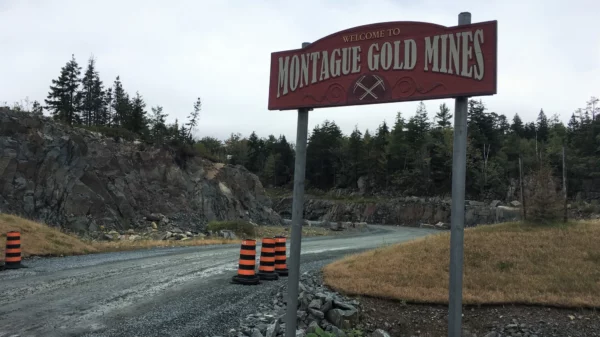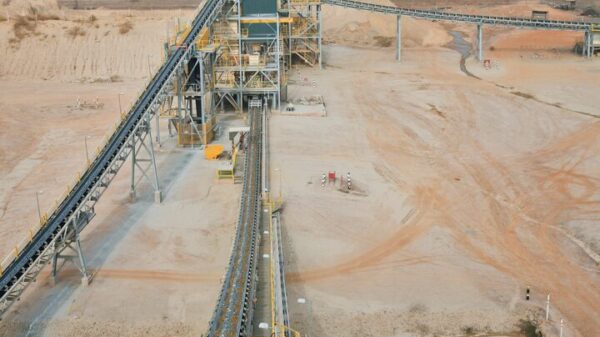The Maritimes have becoming increasingly attractive to gold companies due to its rich geological potential and supportive mining infrastructure. The region, encompassing parts of Nova Scotia, New Brunswick, and Newfoundland and Labrador, is known for its historic gold production and promising mineral deposits.
The first significant gold discovery in the region occurred in 1861 in the Goldenville area of Nova Scotia, marking the beginning of a period of active gold mining. Throughout the late 19th and early 20th centuries, the Maritimes experienced various phases of gold exploration and production, with notable gold rushes and mining operations establishing the region’s reputation for gold.
The industry has seen periods of expansion and contraction, but recent interest and exploration have renewed focus on the Maritimes as a valuable gold-producing area.
This is especially compounded by the recent gold trends related to real world events like the pandemic and attendant inflation.
For example, gold prices eased on Friday after US inflation data met expectations, but remained above USD$2,500 per ounce. Spot gold fell 0.6 per cent to USD$2,506.59, while US gold futures dropped 0.9 per cent to $2,538.30.
Despite the decline, gold is set for a 3 per cent gain this month following a recent peak at USD$2,531.60.
This matters because of gold’s position as a safe-haven asset, which will continue long after confidence in the dollar climbs, even as the spot price may not. Naturally, that bodes well for gold producers, including those in the maritimes.
Here are three stories from companies making waves, for better or worse, in the gold producing provinces in the maritimes.
Read more: Calibre Mining shareholders approve all matters at annual general meeting
Read more: Calibre appoints seasoned Senior VP & CFO Daniella Dimitrov
Nova Scotia government sticks Atlantic Mining with CAD$79M cleanup bill
Atlantic Mining, a Nova Scotia subsidiary of Australia’s St Barbara (ASX: SBM), is facing a CAD$79.9 million cleanup bill for its closed Touquoy gold mine in Nova Scotia.
The company needs to submit the remaining CAD$38.7 million of a reclamation bond by next Tuesday, despite contesting the amount in Nova Scotia’s Supreme Court. The province’s environment ministry and a local environmental group insist on the cleanup to protect groundwater, while Atlantic Mining argues the regulations are excessive and unworkable.
The reclamation approval issued in March sets deadlines extending to 2028 and imposes stringent water quality monitoring requirements. Atlantic Mining argues that these terms are impractical and disregard the site’s historical context.
In July, Environment Minister Tim Halman denied the company’s appeal, insisting that the criteria are essential to protect Nova Scotia’s groundwater. Halman emphasized that the timelines stem from the company’s own submissions and warned of the environmental risks that delays could pose.
If forced to pay the bond, Atlantic Mining may need financial support from St Barbara. The case could set a precedent for future mine cleanups in the region. The company has faced environmental violations and is seeking to renegotiate the mine closure terms, arguing that the imposed conditions are unrealistic and could hinder the reclamation process.
Halifax-based Ecology Action Centre says St. Barbara has often tried to bend regulations to suit it at a cost to the environment. The company has been charged with 23 provincial and three federal violations of environmental laws, the centre said.
“Ecology Action Centre is concerned that the company will not meet any standards required of them, given their track record,” said Karen McKendry, the wilderness outreach coordinator for the centre.

The tailings management facility at Atlantic Mining’s Touquoy mine in Moose River, Nova Scotia. Image via St Barbara.
Calibre gets environmental approval for third pit
At the start of 2024, Calibre Mining Corp. (TSX: CXB) (OTCMKTS: CXBMF) acquired Marathon Gold, gaining full ownership of the Valentine gold mine in Newfoundland, Canada. This acquisition marked a significant expansion for Calibre, adding the promising Valentine project to its portfolio.
Valentine is one of the largest undeveloped gold deposits in Atlantic Canada, with substantial resources and a robust development plan. The addition of Valentine aligns with Calibre’s strategy to grow its production base and increase its presence in North America.
Since the acquisition, Calibre has been advancing the project, securing key environmental approvals and progressing construction with a target to begin gold production by 2025.
The latest update came earlier this month. Calibre received approval from Canada’s Minister of Environment and Climate Change, Steven Guilbeault, earlier this month to add a third open pit, the Berry deposit, to its Valentine gold mine.
The approval followed an environmental assessment update submitted in August 2023 and a thorough review by the Impact Assessment Agency of Canada, which included consultations with indigenous groups and stakeholders. This approval, along with recent provincial permits, secures the major approvals needed for Calibre’s three-pit mine plan.
As a result, the company has launched the largest pure exploration drilling campaign in Valentine’s history, aiming to follow up on recent results and create new discovery opportunities along multiple kilometers of identified shear zones.
Darren Hall, Calibre’s CEO, announced that engineering has progressed to 98 per cent, construction has advanced from 50 per cent to 77 per cent, and the company is on track to deliver first gold in Q2 2025.
Read more: Calibre Mining’s latest finances show fifth straight year of growth
Read more: Calibre Mining gets environmental permits for Volcan deposit in Nicaragua
Sokoman gets busy in Newfoundland
Sokoman Minerals Corp. (CVE: SIC) (OTCMKTS: SICNF) is commencing a 2,000-meter Phase 1 drilling program at its Fleur de Lys Property.
The program, set to start with 20 holes averaging 100 meters in depth, aims to explore historical showings and targets identified during the company’s 2021-2024 till/prospecting efforts.
Drilling will begin in the southern end and progress to the Golden Bull Prospect, discovered in 2023. The Golden Bull area, which covers part of the six to eight square kilometer target zone, has shown promising results with 124 grab samples containing visible gold, including 34 samples with concentrations over 500 ppb Au, and a peak of 9,020 ppb (9.02 g/t) Au.
The samples, mainly from quartz float, suggest potential for further gold zones and structurally controlled mineralization.
Geological formations in Newfoundland and Northern Ireland exhibit similarities due to their shared geological history and the ancient tectonic processes that shaped them.
Both regions are part of the broader Appalachian Orogenic Belt, which formed during the Paleozoic Era through the collision and amalgamation of ancient continents. This geological lineage has resulted in comparable rock types, such as sedimentary, metamorphic, and volcanic rocks, as well as similar mineralization patterns.
For example, both Newfoundland and Northern Ireland contain significant deposits of base and precious metals, including gold and copper, often associated with similar geological structures like fault zones and fold belts. These shared features reflect their common tectonic origins and the enduring geological processes that have influenced their development over millions of years.
Calibre Mining is a sponsor of Mugglehead news coverage
Follow Joseph Morton on Twitter
joseph@mugglehead.com














